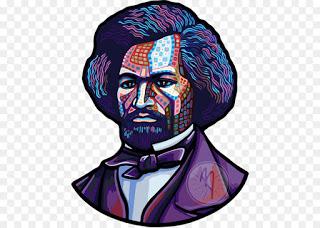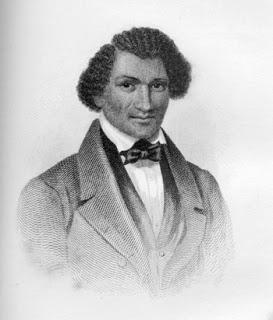Upon reading Issue 2 of Understanding Rhetoric, a Graphic Guide to Writing, I was introduced to the idea of strategic reading. One reading strategy presented in this issue is critical reading. Critical reading is a more active way of reading literature where the reader deeply analyzes and interprets what they are reading. Writers Losh and Alexander present the idea of critical reading by examining Frederick Douglass' autobiographies.



Losh, Elizabeth M., et al. Understanding Rhetoric: a Graphic Guide to Writing. Bedford/St. Martin's, 2017.
The use of Frederick Douglass' book as a way to demonstrate critical reading helped me understand how to effectively analyze text. I have read Douglass' autobiography in the past, so this was all familiar to me. Being able to look at his words in a new way made the information seem so much more powerful. The choice to use Douglass' work implements the idea of Ethos. Frederick Douglass is an extremely well-known and admired activist, so using his words makes the points much more credible. Even in Douglass' own writing, he uses phrases that suggest the idea of Ethos. Readers see that he carefully chose his words to make it seem like they can trust him, and he "established himself as an objective observer of slavery, not just a victim of it" (Losh et al 80).
Later in this issue, the ideas of synthesizing and analyzing are presented. I found it very interesting that images and illustrations can express so many hidden thoughts and ideas. Douglass made himself seem must more powerful and credible simply by changing the way he was presented in the illustrations. The slight change in illustration can completely alter the tone and credibility of what is being said. This is another example of Douglass using Ethos.
By using an image like this in his book, Douglass presents himself as assertive, serious, and credible.
By using an image like this one, Douglass shows readers that he is submissive and less credible than the image above.
Finally, In Issue 2 readers are taught about how to imagine the ideal reader when telling a story.
In Douglass' writing he thinks about how someone of a different race would look at his book. The illustrators of Understanding Rhetoric, a Graphic Guide to Writing, use the lens of a white woman to illustrate Douglass' words. This helps readers see how other people might interpret the words. Cannon and Cannon use a method of recreating the same images used earlier in Issue 2 to show how a white woman would react to Douglass' words. The illustrations are the same except for one small detail that is supposed to represent that a white woman is seeing these things. For example, the pearls and flowered hats on the characters. This use of visual media and metaphor really helped get the idea across and helped me understand the idea of the ideal reader.
Overall, Issue 2 presents readers with many valuable strategies about how to better understand what they are reading. On the other hand, it also gives readers strategies to become a stronger and more credible writer as well. This issue focuses a lot on Ethos, a very important part of rhetoric.
Hill, Lena. “Witnessing Moral Authority in Pre-Abolition Literature (Chapter 1) - Visualizing Blackness and the Creation of the African American Literary Tradition.” Cambridge Core, Cambridge University Press, www.cambridge.org/core/books/visualizing-blackness-and-the-creation-of-the-african-american-literary-tradition/witnessing-moral-authority-in-preabolition-literature/A7C64FDC25603AD37439F0D86D9BAC27/core-reader.
Losh, Elizabeth M., et al. Understanding Rhetoric: a Graphic Guide to Writing. Bedford/St. Martin's, 2017.
“Narrative of the Life of Frederick Douglass, an American Slave Washington, D.C. Author - Others - Unlimited Download. Kisspng.com.” Kisspng.com, www.kisspng.com/png-narrative-of-the-life-of-frederick-douglass-an-ame-2315002/.
ThingLink. “Frederick Douglass(Caleb) by Jenny Wisneski.” ThingLink, www.thinglink.com/scene/759507287730552834.
Comments
Post a Comment